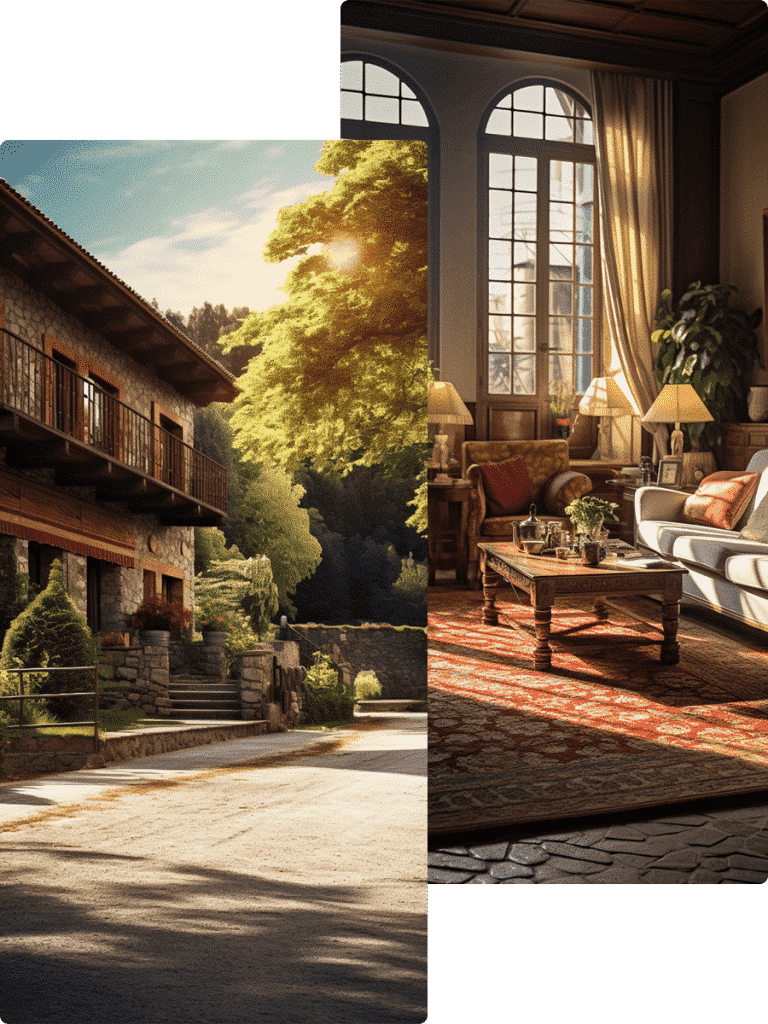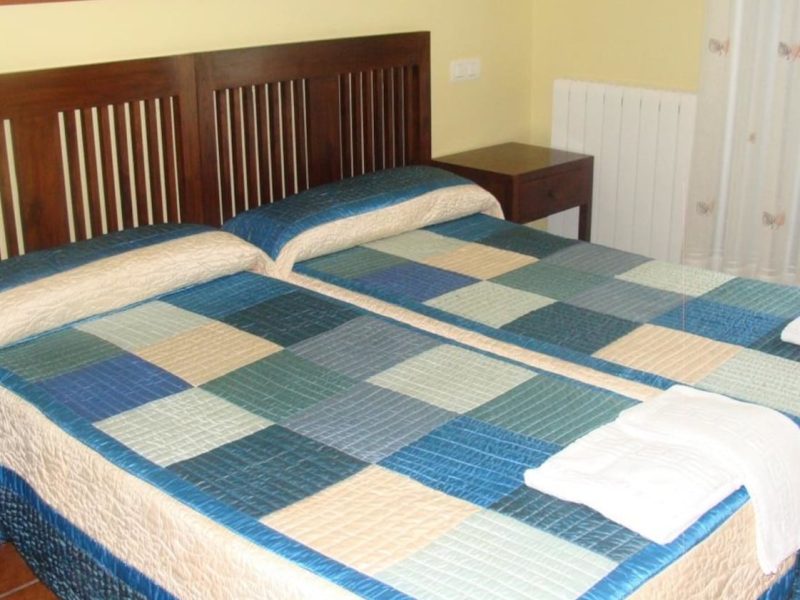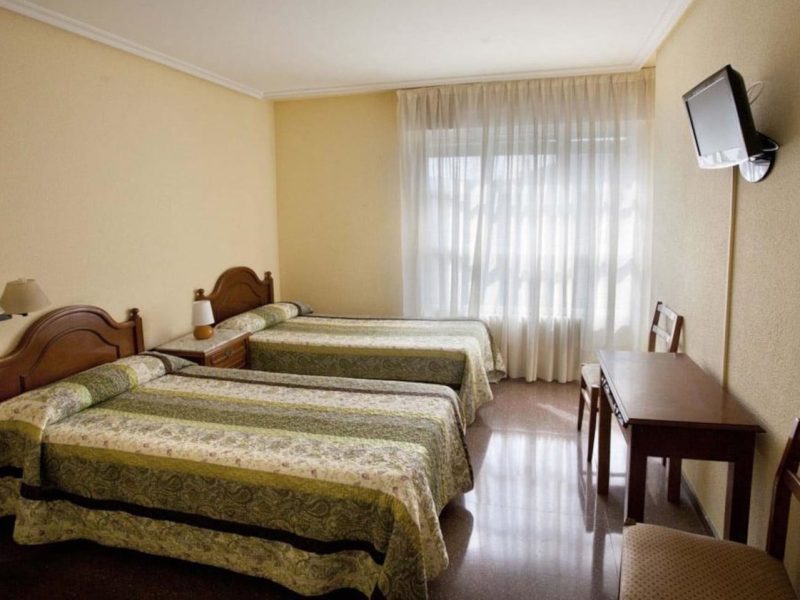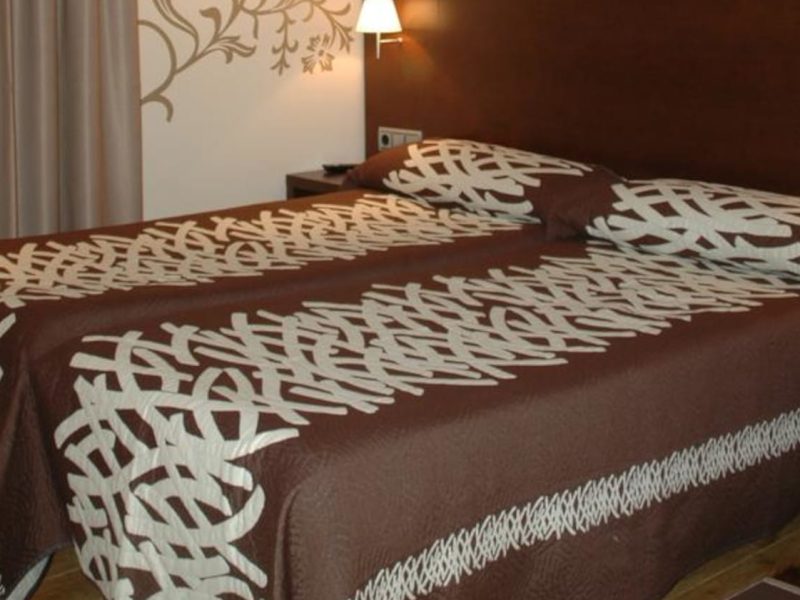Discover the Way from Logroño to Burgos
A unique journey
Way
The Way of Santiago from Logroño, through the Rioja region, doesn’t cover many kilometers, but the cities it passes through hold great Jacobean significance on our French Way.
Stages through the Rioja plains, dotted with farmland and its renowned vineyards, undergo a significant change in terrain in the Montes de Oca, near Burgos.

More details
Origin
Logroño

Destination
Burgos

Duration
7 days / 6 nights / 5 stages

Total Kms
125

Price / person
570€
Book now!
Indicates the number of persons

services
Services
Full and customizable services for a worry-free experience on the Wey of Santiago.
Services Included
Travel assistance insurance in Europe
Rooms with private bathroom.
Accommodation in Hotels, Rural Houses, Hostels
Special breakfast
Travel assistance insurance in Spain
Special gifts, including the Pilgrim's Credential, the Pilgrim's Shell, and a Typical Galician Product.
Digital information dossier of the Camino
On-Route Telephone Assistance
Luggage transfer on the stages
✓ 1 suitcase per person, maximum 20Kgs
Roadside assistance vehicle in case of emergency
No cancellation fees
✓ Up to 10 days before starting the Camino
IVA
Optional Services
Single room supplement
Single room supplement
Dinner supplement
✓ Consult
Additional baggage
✓ Check rate if you have more than 1 suitcase per person
Cancellation Insurance
Remember that the cost of the optional services chosen will be added to the base price of your route. We are committed to making your pilgrimage an unforgettable and carefree experience. Welcome to the Wey!
Stages
Discover the Wey of Santiago towards the majestic Santiago de Compostela.
Day 1: Arrival in Logroño. Lodging.
Welcome to the beginning of your journey. Get ready for an unforgettable adventure!
Day 2: Stage from Logroño to Najera (29.70 km)
- Duration: 7h 30m
- Difficulty: Medium
Breakfast and start of the stage.
Long stage, but flat, almost entirely. The abundance of land cultivated with vineyards will accompany us for much of the route.
The Grajera Park, with its reservoir, at the exit of Logroño, the ruins of the old Hospital of San Juan de Acre, at the entrance of Navarrete and Ventosa, are the main places to highlight on this stage.
We cannot miss visiting the Monastery of Santa María la Real de Nájera.
Arrival in Najera. End of the stage. Lodging.
Day 3: Stage from Najera to Santo Domingo de la Calzada (21.90 km)
- Duration: 5h 30m
- Difficulty: Low
Breakfast and start of the stage.
Completely flat stage that runs through wide dirt tracks, partly asphalted and close to cereal crops, and vineyard areas.
Azofra and Cirueña are the main population centers before reaching our destination, Santo Domingo de la Calzada.
We mention as a notable place the visit to the Cathedral of Santo Domingo de la Calzada “where, according to legend, the hen sang after being roasted” and the House of the Saint.
Arrival in Santo Domingo de la Calzada. End of the stage. Lodging.
Day 4: Stage from Santo Domingo de la Calzada to Belorado (22.97 km)
- Duration: 5h 45m
- Difficulty: Low
Breakfast and start of the stage.
Stage very similar to the previous one, where we will walk on compact dirt tracks, often parallel to the road.
The towns of Grañón, Redecilla del Camino, where a fabulous Romanesque baptismal font is located in its parish church, and Viloria de Rioja are the main towns we will encounter until we reach Belorado.
Arrival in Belorado. End of the stage. Lodging.
Day 5: Stage from Belorado to San Juan de Ortega (24.29 km)
- Duration: 6h 30m
- Difficulty: Medium
Breakfast and start of the stage.
Stage similar to the previous ones, in the first part of the Way, until reaching Villafranca de Montes de Oca, from where we will start the ascent and crossing of the legendary Montes de Oca, mentioned in numerous ancient Jacobean texts, being the most interesting part of this whole stage.
Tosantos, and the aforementioned Villafranca de Montes de Oca, are the main population centers of the stage.
It is essential to visit the Monastery of San Juan de Ortega, inside of which, the Annunciation Capital stands out.
Arrival in San Juan de Ortega. End of the stage. Lodging.
Day 6: Stage from San Juan de Ortega to Burgos (26.40 km)
- Duration: 7h
- Difficulty: Low
Breakfast and start of the stage.
Pleasant stage in its first part, passing through quiet areas of moorland and very lightly traveled roads and paths, until reaching the gates of Burgos, in Villafria, where we will enter through its industrial estate.
Agés and Atapuerca are the main population centers until our end of stage, in Burgos. If you have an extra day, you could visit the famous Atapuerca archaeological site as you pass through that locality.
Arrival in Burgos. End of the stage. Lodging.
- If you have more days, you can extend your Way of Santiago from Burgos.
Day 7: Breakfast - End of our services
We’re coming to the last day of your trip! Enjoy breakfast and conclude this unforgettable experience with us.
Thank you for being part of this adventure!
This itinerary will take you through the most popular stages, allowing you to experience the beauty and culture of the Wey of Santiago. Be sure to book accommodation in advance, as it can get crowded, especially in the high season.
Safe travels and buen Wey!
Lodging
In our constant effort to provide the best experience to our customers, we want to assure you that we are committed to your rest and comfort. The accommodations we offer have been carefully selected and provide private rooms with private bathrooms, along with all the necessary services to make the most of your stay. It is important to note that we will never put you up in hostels.
Since these accommodations have a limited capacity, we will provide you with the exact name once you confirm your reservation and we verify availability on the dates of your choice. Your satisfaction is our priority!

Frequently Asked Questions
What to eat and typical dishes on the Way of Santiago from Logroño to Burgos?
The French Way is one of the most popular organized journeys to the Way of Santiago when it comes to the Jacobean routes to reach Santiago. Its relatively pilgrim-friendly routes, wonderful landscapes, and the facilities provided in terms of accommodation and food make it one of the most attractive.
Specifically, the stretch from Logroño to Burgos is filled with unforgettable postcards, where the vineyards and their friendly inhabitants will always welcome you, inviting you to enjoy their wonderful culture where gastronomy stands out for its exquisite and traditional nature.
Typical dishes of this stretch of the Way of Santiago from Logroño
The region of La Rioja and Burgos specifically enjoy a gastronomic variety that will undoubtedly captivate you, with local products always accompanied by the most delicious wines, also typical of the area. Among the typical dishes that you must not miss trying are:
Camerano Cheese
If you are a cheese lover, you are in the right place. Camerano cheese is native to the Sierra de los Cameros in La Rioja. It is made from goat’s milk, following the same recipe for several centuries.
It is a cheese with a fairly intense and dominant flavor, with a characteristic goat aroma, naturally matured and boasting a striking cream color. It has a brittle but firm texture, with a thin and particular rind.
Sarmiento Lamb Chops
In this area, lamb is quite traditional, so it’s no surprise that one of its flagship dishes is precisely its chops. Roasted over sarmiento embers, which are nothing more than dried vine branches, they are cooked outdoors, especially in the surrounding wineries.
It is a rustic recipe from every point of view. Normally, they are served with potatoes and some fresh salad, although they can be served in many ways, always accompanied by a good glass of wine.
Morcilla de Burgos
Morcilla is one of those sausages that are popular throughout Spain, with hundreds of years of tradition and followers. However, the one from Burgos enjoys special recognition; in fact, it is considered one of its flagship dishes.
In ancient times, it was made with bread crumbs until rice came to replace it in the 18th century.
It is necessary to point out that depending on the area of Burgos you are in, you can find a different type of morcilla, as each region gives it its particular touch. The traditional one is made from pig blood and intestines, onion, spices, salt, pork lard, and peppers, including some spicy ones.
You can consume it as a starter or as an accompaniment to other recipes throughout the year; in fact, there is a saying that says Burgos morcilla is bland, greasy, and spicy.
Castilian Soup
Also known as garlic soup, Castilian Soup is consumed in various regions of Spain, with different variations depending on where it is prepared.
In Burgos, particularly, it is an extremely popular dish, especially during the winter season, as its high calorie content allows its diners to warm up quickly and deliciously.
It is prepared with farmhouse bread (the traditional recipe uses stale bread from the previous day), garlic, olive oil, one egg per diner, sweet pepper, ground white pepper, slices of chorizo, and cubes of ham.
It is served with a glass of good young red wine, further helping the body to warm up and enjoy these intense flavors.
Best restaurants on this itinerary of the French Way from Logroño
Best places to eat on the Way of Santiago from Roncesvalles to Logroño
The stretch from Roncesvalles to Logroño is a true marvel in terms of landscapes, where greenery will always be the protagonist, regardless of the time of year.
If you’re right on this way, here are some recommendations on where you can eat.
Laurel Street and San Juan Street
Central, lively, and both considered as reference points and must-see stops in Logroño.
Laurel Street is as diverse as it is lively. It has more than a hundred establishments between bars and restaurants to eat at any time, from tapas, skewers, and in general all Riojan cuisine. The places are known for their specialties, beyond their own names.
Now, San Juan Street, on the other hand, runs parallel to another of the busiest points, such as Portales Street. Its bars are famous for being perfect places for good skewers and tapas, accompanied, of course, by a Rioja wine.
Mesón los Caballeros Restaurant (Santo Domingo de la Calzada)
In La Rioja, it is a fairly popular restaurant among pilgrims. Located in a historic building, it is located on the corner of Mayor Street, with entrance to the Town Hall square.
Specializing in local cuisine, but with some touches of its own, which has undoubtedly led them to become a true reference in terms of local gastronomy, especially for its exquisite veal and lamb meats, not to mention the cod.
La Abbadia (Burgos)
Inside the Abba Burgos hotel, its menu is considered by many as a true work of art in terms of traditional cuisine. Located just 300 meters from the Cathedral, it enjoys one of the best views in all of Burgos.
Here you can enjoy meats, rice dishes, and fish, where veal and cod will always be the protagonists, regardless of the time of year.
Puntido (Burgos)
Located in the hostel of the same name, Puntido is a restaurant where pilgrims come to regain their strength and enjoy a homemade meal full of tradition.
It has a menu carefully designed for pilgrims, where San Antón stew is one of the flagship dishes of the place. Enjoy fresh bread and the best wines of the area at any time, offering variety between stews, fish, rice dishes, and meats.
If you arrive early, you can enjoy a drink to accompany your skewers or the always convenient potato omelet.
How to get to Logroño
We provide you with the different options on how to get to the Way of Santiago from Logroño.
Option 1: Private car
The best option is to leave your car parked in the Hotel’s assigned car park or in one of the many public car parks in the vicinity of the Hotel.
Option 2: Bus
Burgos is well connected by bus to many locations in Spain.
–From Madrid to Logroño with the companies Alsa and Plm, with frequent departures from the Bus Station at Avda. de America and from Terminal 4 of Madrid-Barajas Airport.
Option 3: Train (Renfe). Direct trains every day from Madrid and Barcelona, among many other locations in Spain.
Upon your arrival in Logroño, begins an experience you will never forget, where we recommend continuing reading below to discover what to see and do on your Way of Santiago from Logroño.
What to see on the Way of Santiago from Logroño to Burgos (Travel Guide)
STAGE FROM LOGROÑO TO NAJERA
In La Grajera, highlight the reservoir and park of the same name.
In Navarrete, the 16th-century Church of the Assumption, in Herrerian style with an interesting Baroque altarpiece from the 16th century.
The Ruins of the pilgrims’ Hospital of San Juan de Ocre, with a gateway whose capitals represent different scenes of the pilgrims’ daily life.
In Ventosa, the Church of San Saturnino, whose 17th-century square tower offers the best vantage point to enjoy the red clay fields covered with vineyards surrounding Ventosa. The original construction dates back to the 16th century and retains its Gothic facade from that period.
In Najera, highlight the Monastery of Santa María la Real, an artistic emblem of the former capital of the Kingdom of Navarre. Founded in 1052, it was rebuilt in the 15th century in Gothic style. The ensemble stands out for its Plateresque cloister of the Knights, adorned with beautiful stone lattice windows.
STAGE FROM SANTO DOMINGO DE LA CALZADA TO BELORADO
In Redecillas del Camino: Highlight the Palace Houses, the 12th-century Romanesque baptismal font (Church of Santa María)
In Belorado, we can visit the Church of Santa María, a 16th-century work, with a magnificent stone altarpiece, entirely dedicated to Santiago.
The Church of San Nicolás with the image of San Caprasio.
At the exit of this town is the bridge built by San Juan de Ortega.
STAGE FROM BELORADO TO SAN JUAN DE ORTEGA
In Tosantos, to the right of the road, stands out the rock-cut Hermitage of Our Lady of the Rock, excavated in the mountain. Inside, a Romanesque image from the 12th century is venerated.
Half a kilometer before Villafranca de los Montes de Oca, we find the so-called apse of San Felices. These are the remains of an old Mozarabic Monastery from the 10th century.
Already in Villafranca de Montes de Oca, we find the Hospital of San Antonio Abad; from it, the main entrance has been preserved, above which is sculpted the coat of arms of the Catholic Monarchs.
The Church of Santiago, from the 18th century. Its baptismal font is a giant natural shell brought from the Philippines.
In San Juan de Ortega, its Sanctuary stands out, which deserves a mandatory visit given its importance.
STAGE FROM NAJERA TO SANTO DOMINGO DE LA CALZADA
The parish church of the 17th and 18th centuries, dedicated to Our Lady of the Angels, features a carving of Santiago Peregrino.
As a gem of this Way of Santiago from Logroño and a few kilometers from Azofra are the Monasteries of Suso and Yuso of San Millán de la Cogolla. They are World Heritage Sites and the birthplace of the Castilian language with their Emilian Glosses, handwritten annotations written in Latin, Romance, and Basque.
In Santo Domingo de la Calzada, its Cathedral stands out. The cathedral was built over the tomb of the Saint, the most emblematic building in the town. The layout is Romanesque, but its style is Gothic and Renaissance. Inside, facing the tomb of the Saint, is the niche where a rooster and a hen coexist in memory of the legend of the hen that “sang after being roasted.” You can climb the bell tower, which is a good option, as the view from the top is worth it. Across the street, the Parador de Turismo preserves several elements from the old pilgrims’ Hospital.
In Santo Domingo de la Calzada, the Convent of San Francisco, Calle Mayor, the Town Hall, the Walls, and the Sor María de Leiva tower also deserve special mention.
STAGE FROM SAN JUAN DE ORTEGA TO BURGOS
In Burgos, we come across another jewel that is well worth a stop on the Way of Santiago from Logroño, and that is the Metropolitan Cathedral of Santa María. A magnificent Gothic work begun in 1221 by Fernando III El Santo and consecrated in 1260 for its architectural grandeur, the richness of its interior ornamentation, the Cathedral of Burgos is one of the most valuable monuments of Spanish art. From its iconic Gothic towers to the tomb of El Cid in the transept, everything is magnificent in it.
The Church of San Nicolás, Gothic from the 15th century, and of Santa Gadea.
The Cordón House or Condestable Palace, Santa María Gate and Arch, and Miraflores Charterhouse.
The Monastery of Las Huelgas Reales deserves a special visit. Founded by Alfonso VIII in 1187, for noblewomen, under the rule of San Bernardo. It served as the burial place for several kings of Castile. From Fernando III El Santo, several kings were crowned there.
What is the busiest and easiest section of the French Way?
Of all the itineraries of the French Way of the Way of Santiago originating in the border town of Roncesvalles and ending 790 kilometers away in the city of Santiago, the most traveled part is the Way of Santiago from Sarria to Santiago. It is a way suitable for beginners and for people of any age and physical condition. With a route of practically flat stages, it becomes ideal for those pilgrims whose goal is the Cathedral of Santiago, but with a more limited availability of days than if we were to start our Way from Logroño.
Do you still have doubts about the Camino?
This video will give you a more detailed and visual look at what to expect on your adventure. Don’t miss it!














